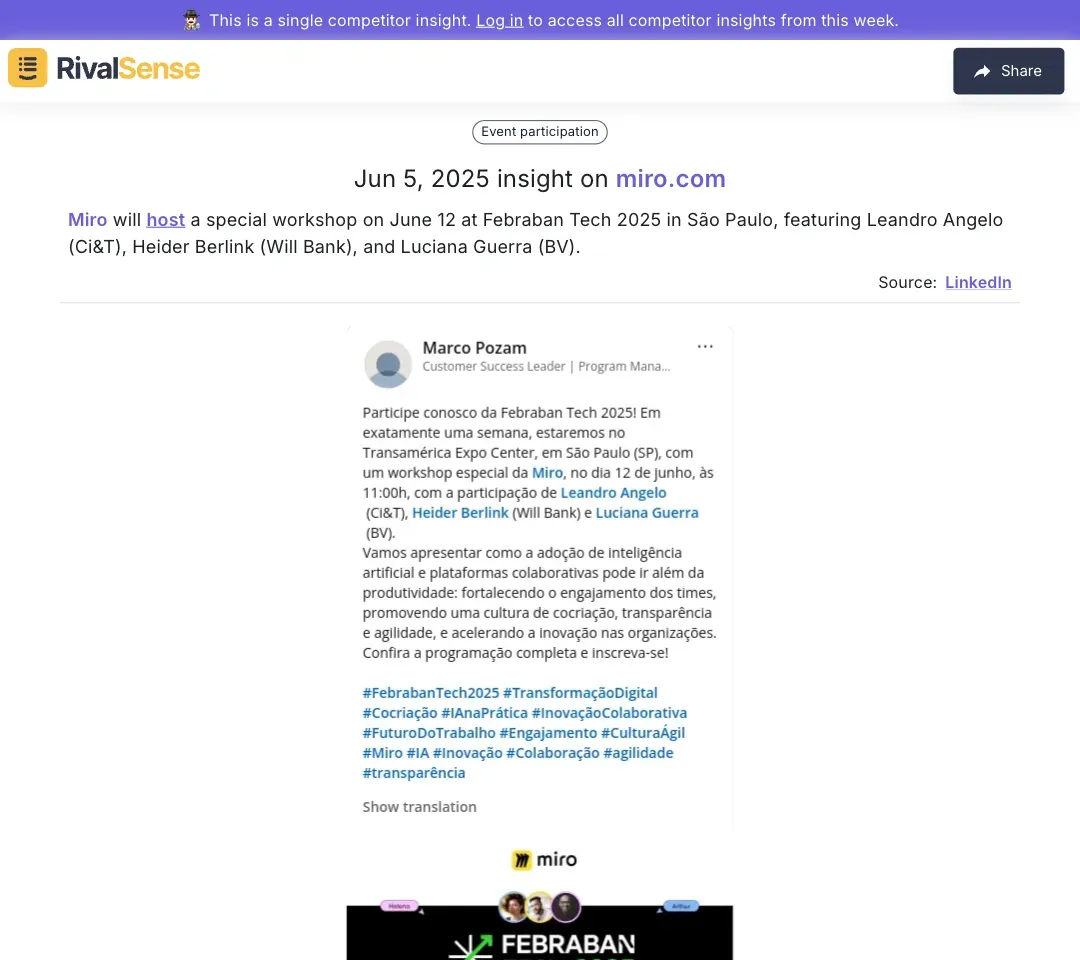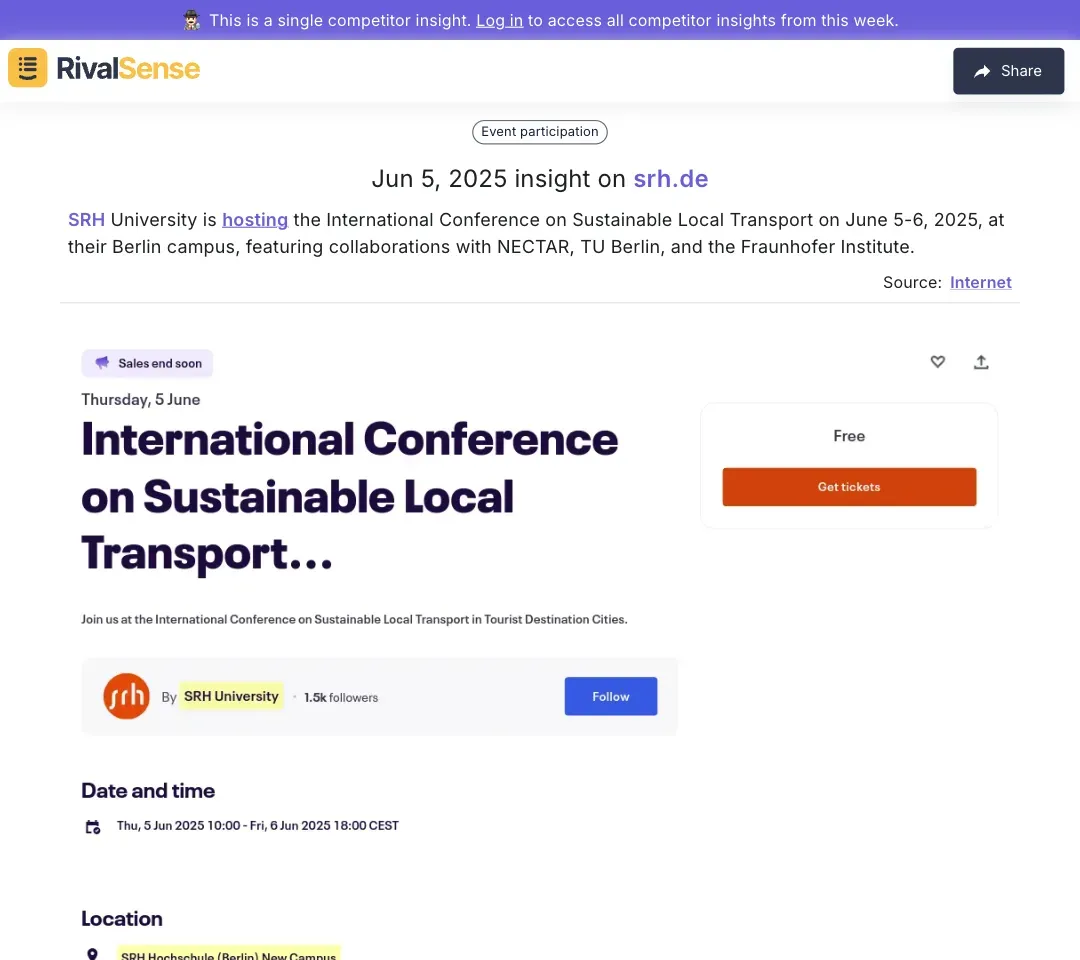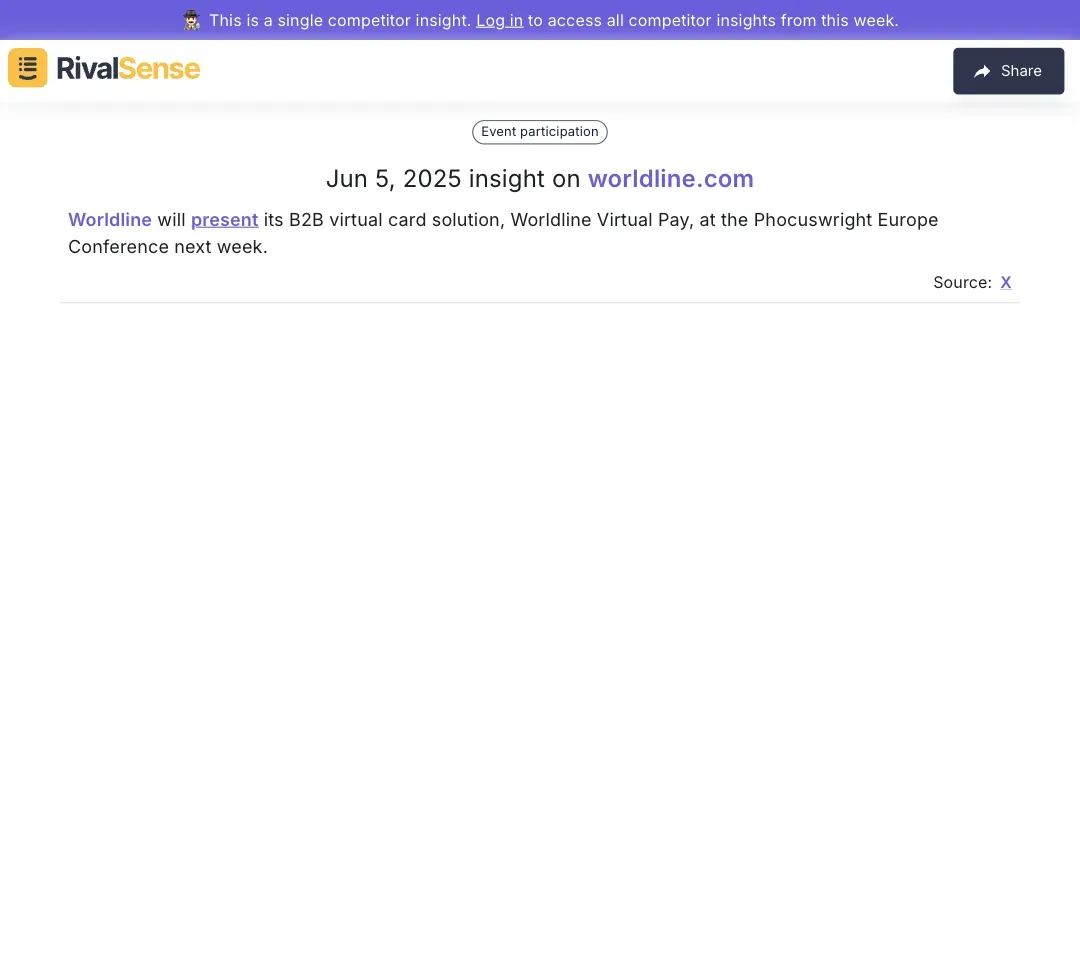5 Quick Hacks for Strategic Competitor Event Insights
In the fast-paced world of business, staying ahead of competitors requires more than just monitoring their products or marketing strategies. Tracking competitor events is a goldmine for strategic advantage, offering a window into their priorities, partnerships, and future moves. By analyzing these events, you can uncover trends, identify emerging opportunities, and even anticipate market shifts before they happen.
Competitor events, whether they're product launches, webinars, or industry conferences, reveal what your rivals are focusing on. For instance, a sudden surge in sustainability-themed events might indicate a shift toward eco-friendly initiatives. Similarly, partnerships announced at these events can highlight alliances that could reshape the competitive landscape.
Here’s what you can gather from competitor events:
- Priorities: The themes and topics of events often reflect a competitor’s strategic focus.
- Partnerships: Collaborations announced during events can signal new market expansions or innovations.
- Audience Engagement: The size and demographics of attendees provide insights into the competitor’s target market.
Quick Tips to Get Started:
- Subscribe to Competitor Newsletters: Stay updated on their event schedules.
- Leverage Social Media: Follow competitors and their key executives for real-time updates.
- Attend or Monitor Events: Participate virtually or review post-event summaries for key takeaways.
- Analyze Event Content: Look for patterns in topics or recurring speakers.
- Use Competitor Tracking Tools: Platforms like RivalSense automate event monitoring and deliver curated insights.
By integrating these insights into your strategy, you can turn competitor events into a strategic asset for your business.
Leveraging Competitor Workshops for Market Intelligence 💡
Competitor workshops provide concentrated insights into strategic priorities and innovation pipelines. These sessions often reveal unfiltered perspectives on market approaches and emerging technologies. By dissecting workshop content, you gain foresight into competitors' tactical plays before they hit the market.
Here’s how to extract actionable intelligence:
-
Identify Key Themes and Topics:
- Action: Review workshop agendas or promotional materials to pinpoint recurring themes.
- Tip: Use automated tools to track and categorize these themes over time.
- Outcome: Understand competitor priorities and align your strategy accordingly.
-
Analyze Speaker Line-Ups:
- Action: Note speakers and their affiliations. Are they industry leaders or potential partners?
- Checklist:
- ✅ Speaker expertise areas
- ✅ Frequency of appearances (indicates strong relationships)
- Outcome: Gauge competitor influence and spot partnership opportunities.
-
Anticipate Innovations:
- Action: Scrutinize content for hints about new products or services.
- Hint: Look for jargon like “next-gen” or “innovative solutions.”
- Outcome: Stay ahead by predicting competitor moves and refining your offerings.
Real-World Insight:

Miro hosted a workshop at Febraban Tech 2025 featuring executives from major financial institutions. Tracking such workshops reveals market-entry strategies—here, Miro's focus on banking partnerships signals sector-specific targeting. This intel helps refine your own partnership playbooks.
Gaining Insights from Academic and Industry Conferences 🎓
Academic conferences unveil long-term R&D directions while industry events showcase immediate strategic plays. These gatherings act as early-warning systems for emerging trends and alliance formations. Monitoring them helps anticipate market shifts six to twelve months before mainstream adoption.
Here’s how to leverage them:
- Collaborations with Academic Institutions: Watch for university partnerships signaling R&D focuses. Practical step: Follow joint research publications.
- Thought Leadership Analysis: Note presented topics—they align with core strategic priorities.
- Agenda Trend-Spotting: Identify sessions on emerging technologies. Checklist:
- ✅ Competitor speakers
- ✅ Session titles
- ✅ Cross-reference with recent announcements
- Presentation Deep Dives: Focus on Q&A sessions for unscripted insights.
- Strategic Networking: Connect with attendees post-event via LinkedIn.
Real-World Insight:

SRH University's sustainable transport conference featured collaborations with Fraunhofer Institute and TU Berlin. Academic events like this reveal future regulatory focuses—here, sustainable logistics. Spotting such trends early lets you pivot offerings ahead of compliance deadlines.
Decoding Product Launches and Announcements at Events 🚀
Product launches at events are high-signal moments revealing competitive positioning and go-to-market strategies. The venue choice, messaging, and audience targeting all provide clues about market priorities. Analyzing these helps benchmark your offerings against emerging threats.
- Timing and Venue Insights: High-profile events target media and professionals; exclusive events focus on stakeholders. Tip: Track patterns to anticipate future launches.
- Feature and Messaging Analysis: Compare USPs against your offerings. Checklist:
- ✅ Pricing models
- ✅ Technology differentiation
- ✅ Customer benefit emphasis
- Market Reception Gauge: Monitor social reactions during events. Practical step: Track event hashtags for sentiment analysis.
Real-World Insight:

Worldline presented its B2B virtual card solution at Phocuswright Europe. Launching at a payments conference signals industry-specific targeting—here, travel fintech. Such insights help preemptively strengthen your value proposition in contested niches.
Actionable Strategies for Tracking Competitor Events 📊
Systematic event tracking transforms random observations into strategic assets. The key is integrating insights into operational workflows for real-time decision-making. Without structured processes, critical intelligence often gets lost in noise.
-
Automate Monitoring: Use specialized tools for tracking event calendars. Set alerts for keywords like "[Competitor] webinar" or "[Competitor] summit".
-
Centralize Intelligence: Create a competitor event dashboard. Categorize by:
Event Type Strategic Value Product Launches Feature benchmarking Workshops Partnership signals Conferences Trend forecasting -
Disseminate Insights:
- Weekly Reports: Highlight key events
- Real-Time Alerts: Push to Teams/Slack
- Action Frameworks: Convert takeaways into tactical steps
-
Act Strategically:
- Benchmark against competitor event quality
- Schedule counter-events during competitor gaps
- Refine messaging using competitor talking points
Quick Implementation Checklist:
- [ ] Set automated event alerts
- [ ] Build event analysis dashboard
- [ ] Establish insight-sharing protocols
- [ ] Schedule quarterly competitive benchmarking
Conclusion: Turning Insights into Competitive Advantage 🔥
Strategic event tracking moves beyond observation to active market shaping. Consistent analysis uncovers patterns that inform product roadmaps, partnership strategies, and messaging frameworks. The real competitive edge comes from converting these insights into preemptive actions.
Establish recurring review cycles to refine tactics as competitors evolve. Remember: Leadership comes not from reacting to moves but anticipating them. Start by auditing one competitor's event calendar this week—document themes, partnerships, and audience targeting.
Pro Tip: Tools like RivalSense transform this process from manual scavenger hunts to strategic advantage. Their automated tracking covers product launches, pricing updates, and event participations—delivering digestible weekly reports.
💡 Ready to decode competitor moves?
Try RivalSense free and get your first competitor intelligence report today. Spot trends before they scale and outmaneuver rivals systematically.
📚 Read more
👉 How AI Agents Are Revolutionizing Competitor Research
👉 Key Account Tracking vs Competitor Tracking: What's the Difference and Why You Need Both
👉 Unlock Hidden Opportunities: Mastering Competitor White Space Analysis
👉 How to Analyze Competitor Feature Updates: IPRoyal's Proxy Checker Case Study
👉 Decoding Competitor Partnerships: Lessons from Adonis's Healthcare Moves
